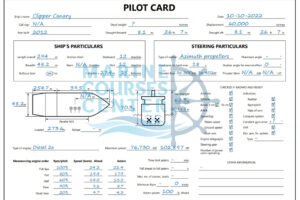parts of ship | ship’s hull | cargo hold in ship | ship hatch covers | seamanship | part 7 | ship accommodation ladder | accommodation ladder and gangway | Parts of Middle section
Welcome to Marine Courses Center today we will discuss
Parts of ship | Parts of Middle section | parts of ship | ship’s hull | cargo hold in ship | ship hatch covers | seamanship | part 6 | ship accommodation ladder | accommodation ladder and gangway | Parts of Middle section
Parts of Middle section
Bulwark
Protective structure with a height of about one meter on both sides of the upper deck intended to safeguard men from falling overboard or from waves washing over the deck.
(Bulwarks consist of bulwark plates, bulwark stays and hand rails.)
Wash ports:
Openings made in bulwark plates for the draining out of dirty water from the deck. They are also called deck scuppers.
Hatch ways:
Openings in the deck for loading and/or discharging cargo.
Hatch coamings:
Structures around the hatch openings which give additional rigidity.
Hatch covers:
It’s the cover which close the hatches.
Holds:
Spaces for the stowage of cargo.
Ventilators:
Cylindrical tubes installed on deck for the ventilation of cargo holds and cabins.
Masts:
Upright posts on deck in which derricks are fitted, navigation lights and telecommunication antennas.
Derrick:
A swinging boom over or near a hatchway, supported by a topping lift and controlled laterally by Guys.
Funnels:
Is a device for exhausting and flow of gases into the atmosphere. Funnel marks showing the ownership of a vessel.
Engine room:
Location where propulsion engines and other auxiliary machinery are installed.
Stern watertight bulkheads:
Transverse partitions consisting of plating connected to the bottom plating and upper deck plating intended to form watertight compartments.
Double bottom:
Vessels’ bottom structures with inner and outer bottom plating used for restoring fuel and water.
Ballast tanks:
Tanks-double bottom, deep, and peak-for carrying water ballast.
Shaft tunnel:
Tunnel between the engine-room and the stern frame for protecting the propeller shaft(s).
Propeller Shaft:
It is the shaft (bar) transmitting the propulsion from the engine to the propeller. The Aftermost section of the shaft carries the propeller, Also it is called tail shaft, screw shaft.
Accommodation ladder:
Ladders fitted on both sides of the vessel for embarkation or disembarkation.
Portholes:
Circular glass windows with blind plate inside, for lighting and ventilation.
Skylights:
Glass windows with frames in the ceilings of engine room spaces for lighting and ventilation.
Cofferdam:
An unused space between two bulkheads separating adjacent compartments, usually fore & aft of the engine room. In tankers, cargo spaces are always isolated from other parts of the ship by means of cofferdams.










